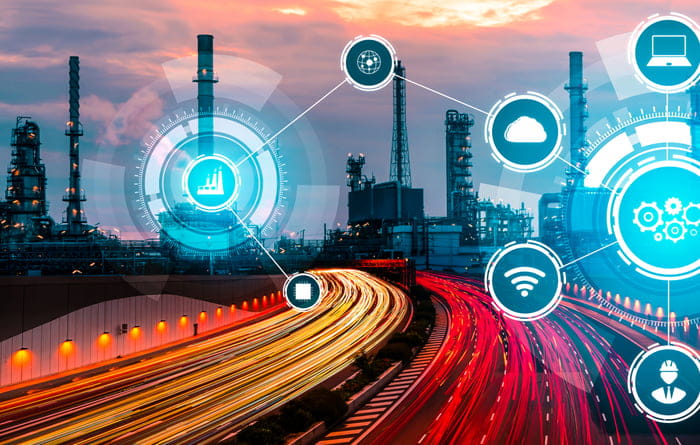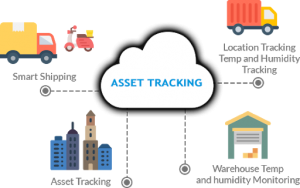Asset Tracking
Home / Products / Monitoring / Asset Tracking
Asset tracking is a method of tracking the physical location and status of items using IoT connected devices. It can be used for various purposes and industries, such as transportation, logistics, manufacturing, healthcare, retail, or agriculture. It can provide the following benefits:
- Improve operational efficiency: It can help optimize asset management and logistics processes, reduce manual errors and paperwork, and increase productivity and profitability. It can also enable better inventory management, delivery scheduling, and route optimization.
- Enhance customer satisfaction: It can help provide customers with accurate and timely information about their orders, deliveries, or services, and improve customer service and loyalty. It can also enable faster and more reliable delivery, and reduce customer complaints and returns.
- Reduce costs and risks: It can help lower asset maintenance and repair costs, prevent asset loss and theft, and comply with regulatory and safety standards. It can also enable proactive and preventive maintenance, and reduce asset downtime and wastage.
Asset tracking can be achieved using various technologies and devices, such as GPS, RFID, NFC, Bluetooth, Wi-Fi, cellular, or other geolocation technologies. Asset tracking devices can send their coordinates and other monitoring information to a cloud platform, where users can access and analyze the data using web or mobile applications. Asset tracking platforms can also provide features such as geofencing, reporting, alerts, and notifications.
Some of the key features of asset tracking platforms are:
- Real-Time Tracking: Real-time tracking allows users to see the current and historical location of their assets on a map, as well as their speed, direction, and other relevant data. Real-time tracking can help users monitor their asset performance, utilization, and efficiency, and respond to any issues or anomalies quickly.
- Geofencing: Geofencing allows users to create virtual boundaries around specific areas, such as warehouses, delivery zones, or restricted sites. Users can set rules and alerts for when their assets enter or exit these geofences, and monitor their dwell time and activity within them. Geofencing can help users ensure their asset security, safety, and compliance, and optimize their asset allocation and distribution.
- Detailed Reporting: Detailed reporting allows users to generate comprehensive reports and analytics on their asset data, based on various parameters, such as asset type, location, time, or event. Users can also export or share their reports with their stakeholders or partners. Detailed reporting can help users gain insights and visibility into their asset operations, and make informed business decisions.
- Alerts and Notifications: Alerts and notifications allow users to receive real-time alerts and notifications via email, SMS, or push notifications when their assets experience certain events or conditions, such as movement, temperature change, battery level, or maintenance status. Users can also configure their own custom alerts based on their specific needs and preferences. Alerts and notifications can help users stay updated and aware of their asset status, and take appropriate actions when needed.

Risks of not using asset tracking platforms are:
- Lack of visibility and control: Without asset tracking platforms, users may not have a clear and updated view of where their assets are, how they are being used, and what condition they are in. Users may also have difficulty managing their inventory, scheduling their deliveries, or optimizing their routes.
- Poor customer experience: Without asset tracking platforms, users may not be able to meet their customer expectations and demands, or provide them with reliable and transparent information about their orders, deliveries, or services. Users may also lose their competitive edge and reputation in the market.
- Higher costs and risks: Without asset tracking platforms, users may incur higher asset maintenance and repair costs, or face asset loss and theft. Users may also face legal or regulatory penalties, or compromise their asset safety and security.

Asset tracking platforms are designed to help users track and manage their assets with ease and efficiency. Whether users need to track their vehicles, containers, machinery, or other assets, asset tracking platforms have the right solution for them. Asset tracking platforms are a key component of IoT and digital transformation.
